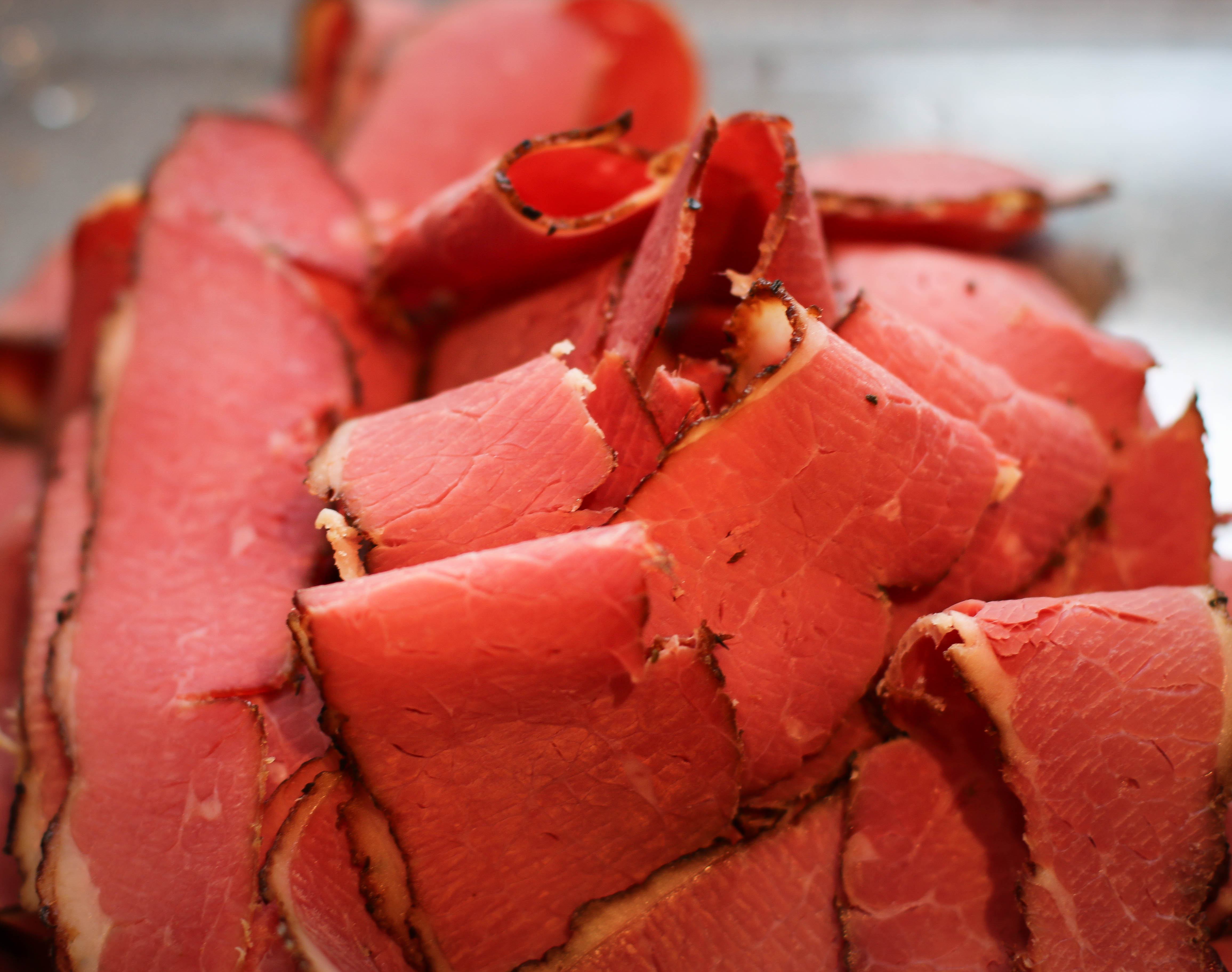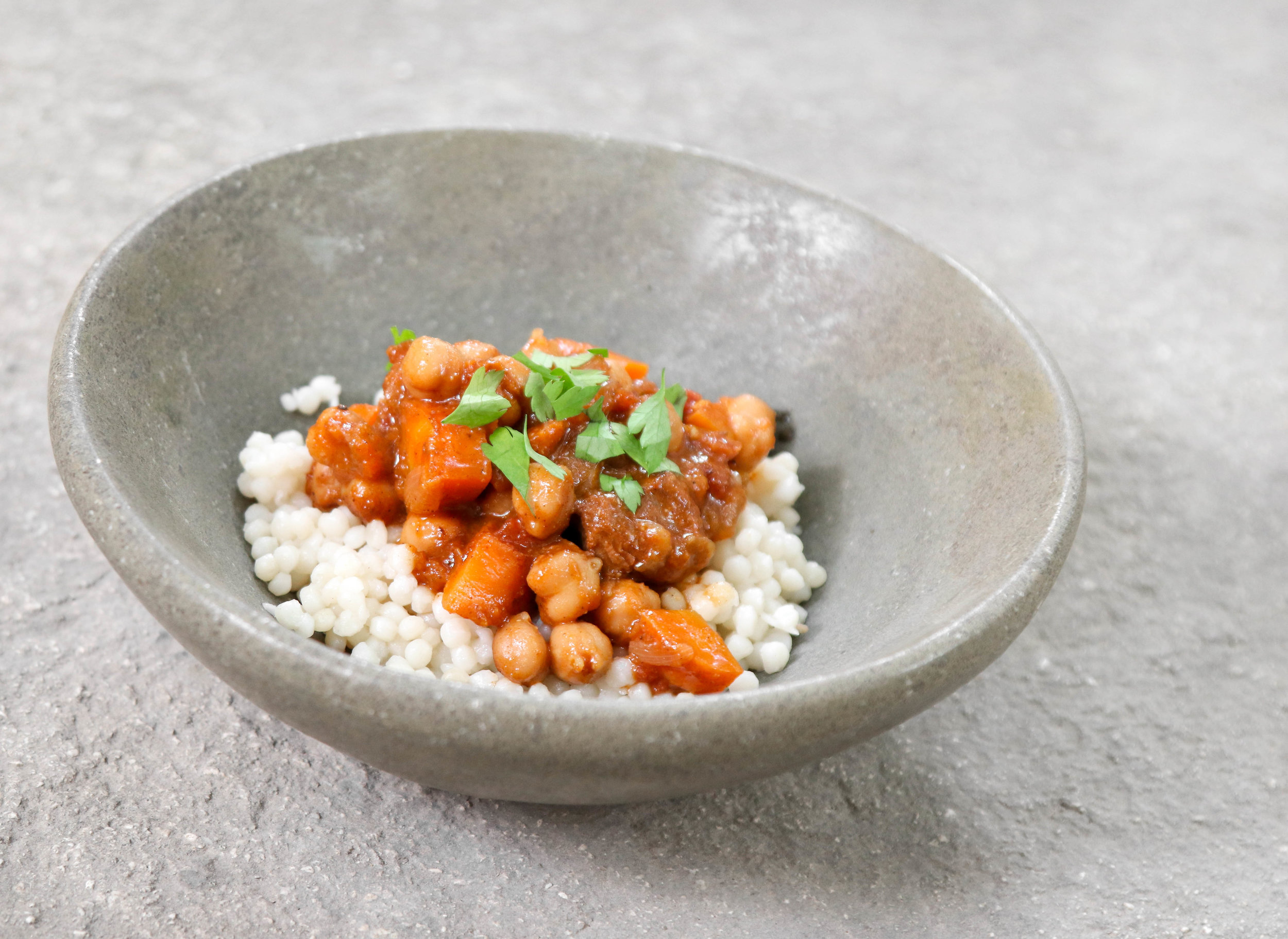Home-Cured Corned Beef
I have a vivid memory of eating corned beef as a 5 year-old. My family was living in Tanzania, and we were on a camping trip in Serengeti National Park. I remember our whole family sitting on the hot metal hood of our car, watching the wildebeest graze, talking in hushed voices, and eating warm, salty chunks of corned beef out of a can. I've had a soft spot for the stuff ever since, despite what I assume must have been pretty bad corned beef. Unfortunately, when many people hear corned beef, they think salty, greasy, odd textured, and over processed. This recipe, which I've been perfecting over the last couple years, is my small attempt to bring corned beef back to a the place of honor it deserves.
If you've never home-cured meat before, this corned beef is the place to start. It's quite simple (for a process that takes 6 days), and the product consistently delivers. The corned beef comes out a lovely pink, it is highly flavored without being salty, and deeply unctuous without being at all greasy. It works perfectly for homemade Rubens, gives a rustic twist to Eggs Benedict, and is great on its own with pickles and cheese. The recipe below (adapted from Nick Sandler and Johnny Acton's Preserved) takes the slow and traditional approach...so count on a full 6 days for the meat to reach perfection.
Ingredients:
- 2 cup kosher salt
- 2 ounces curing salt
- 2 quarts water
- 4 tablespoons garlic powder (8-9 cloves if fresh)
- 1 large onion, diced
- 1 tablespoons coriander, ground (1/2 T if whole)
- 1 tablespoons mustard powder (2 T if liquid mustard)
- 1 tablespoons cloves, whole (1/4 T if powdered)
- 3 tablespoons black pepper
- 2 tablespoons dried thyme (handful if fresh)
- 6 bay leaves
- 5-7 pounds beef brisket
Steps:
- Buy the best brisket you can find. Yes, it gets expensive, but the underlying quality of the meat does shine through in this recipe. If you can afford grass-fed from a local butcher, this would be a good time to do it.
- Mix all ingredients (expect the brisket) together in a large bowl. Whisk until the salts are dissolved. You may be thinking the curing salt is optional. It is not in this case. The sodium nitrate in the curing salt not only gives corned beef its gorgeous pink color, but it also keeps nasty bacteria like botulinum from growing during the prolonged curing and slow cooking as the meat gradually comes up to temperature.
- As the brine flavors meld, take out your brisket. Rinse off the meat and pat it dry. One side of the brisket will likely have a thick layer of fat. Do your best to trim this off with a sharp knife. For optimal flavor, you'd like to leave a thin layer of fat, but if you want to take all the surface fat off, that is ok too. You can see in the picture below about how much fat I like to leave.
- If you have a meat injector, this is its chance to shine. Fill the syringe with the brine and inject it, forming small pockets every 2-3 inches across the brisket, trying to inject it about halfway through the thickness of the meat. You'll be injecting about 1/3 cup total of brine. If you don't have an injector, your meat will still turn out great. You will just need to make a deep cut every 3-4 inches, everywhere that the meat is more than an inch and half thick. What you are trying to achieve in this step is even and complete penetration of the brine. This helps with flavor, but is mostly important so that the curing salt can keep nasty bacteria from growing in the interior of the meat.
- Put the meat into a large zip-top bag, pour in all the brine you can fit, squeeze out the air, and seal the bag. I double bag and put the bag in a bowl just to make sure I don't have a leak.
- Put the brined meat into the refrigerator for about 6 days (minimum 5 days, maximum 7 days). Flip the bag a few times through the curing just to make sure there is even contact with the meat.
- After curing is finished, dump off the brine and pat the meat dry. You are ready to cook!
- If you have a smoker, heat it to 190 degrees. The meat will cook for approximately 12 hours at this temperature. I like my brisket lightly smoked, so I use a handful of mesquite chips at the beginning of the cook and handful of pecan chips at the end. If you don't have a smoker, you can easily cook it in an oven as well. If cooking in the oven, add 2-3 drops of liquid smoke to the brine in step 3. There is a huge variety of quality in liquid smokes available, I prefer Lazy Kettle's for its subtle natural flavor. Put your oven on the lowest temperature possible, reducing the listed cook time by 1 hour for every 10 degrees over 190 (for example cook for 11 hours at 200, or 10 hours at 210).
- When the time is up, remove the finished meat and allow it to cool for 1-2 hours at room temperature covered with a piece of foil. Then chill the meat down in the freezer for 2-3 hours covered in foil or in a bag. This will make slicing much, much easier and cleaner.
- Slice thinly, either by hand with your sharpest knife, on a mandolin, or with a food slicer. It is ready to eat! You can seal the leftovers and freeze for up to 3 months.













